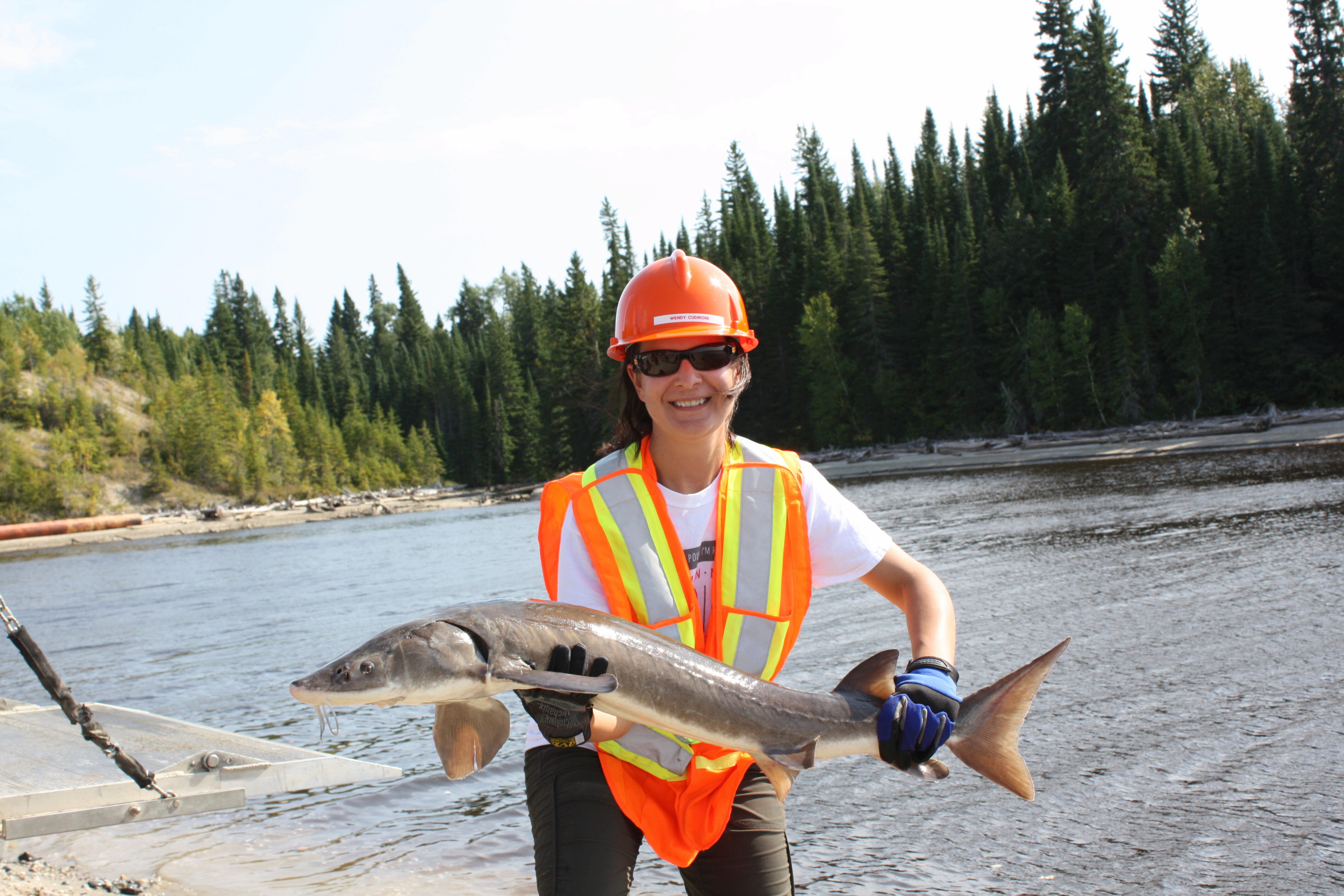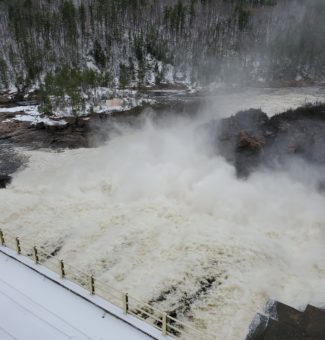Lake Sturgeon thriving again in the Upper Mattagami River
In the Upper Mattagami River in northern Ontario, the long-absent lake sturgeon continues to mount an astounding comeback.
For many years, lake sturgeon were believed to be extirpated from the section of river between OPG’s Wawaitin Generating Station (GS) and Sandy Falls GS in the Timmins area. A combination of factors likely contributed to their downfall, including historic log drives, poor water quality, overfishing and fragmentation due to dam construction.
In 2002, OPG, the Ministry of Natural Resources and Forestry (MNRF) and a number of local advocacy groups introduced 51 adult lake sturgeon from the Lower Mattagami River in an effort to repopulate the Upper Mattagami. Now, 16 years later, a new research study concludes this relocation effort is proving successful in bringing back the freshwater fish, which can live more than 100 years, reach over two metres in length and weigh more than 150 kilograms.
It appears from the evidence that lake sturgeon are rebounding quite nicely in the Upper Mattagami River. There has been steady annual recruitment of fish over the past decade attributed to the original 51 released fish. Current estimates suggest between 400 and 500 lake sturgeon now inhabit this section of the river. The sturgeon are re-establishing a niche for themselves in this ecosystem which is really encouraging to see.Dan Gibson, Senior Environment Specialist with OPG

Over the years, OPG's Northeast Operations and Environment staff have worked with various agencies, including the MNRF, to survey and monitor sturgeon in this reach of the river through tagging and radio telemetry studies. As part of the sturgeon recovery program, OPG also partnered with the MNRF and Trent University to sponsor a graduate student's Master’s study investigating the effectiveness of the sturgeon relocation project.
Maggie Boothroyd’s paper, titled Translocation as a Mitigation Tool: Demographic and Genetic Analysis of a Reintroduced Lake Sturgeon Population, found successful reproduction and recruitment by relocated adult lake sturgeon was confirmed through genetic analysis, which linked juveniles to parents that had retained tags from the original relocation.
These promising results reflect the benefits of improving water quality, a strict catch and release policy for recreational fishing, and the 2009 closure of commercial fishing that has drastically reduced overharvesting of sturgeon.
The final factor attributed to the original extirpation, the fragmentation of the river due to dam construction, does not appear to be limiting recovery and annual recruitment, Gibson said.
“It’s becoming increasingly evident that fragmentation and hydroelectric dam construction, while a factor in the extirpation, is not the primary driver of sturgeon abundance in this stretch of river.”
Still, OPG and its operations continue to play a big role in lake sturgeon recovery. OPG generating stations on the river maintain a minimum flow release to support sensitive spawning periods for aquatic species, including sturgeon. The company has also registered nine mitigation plans under the Endangered Species Act to protect lake sturgeon on rivers where it operates across the province.
Subscribe and stay informed
Sign up to receive the latest news, project updates, and event information from OPG.


